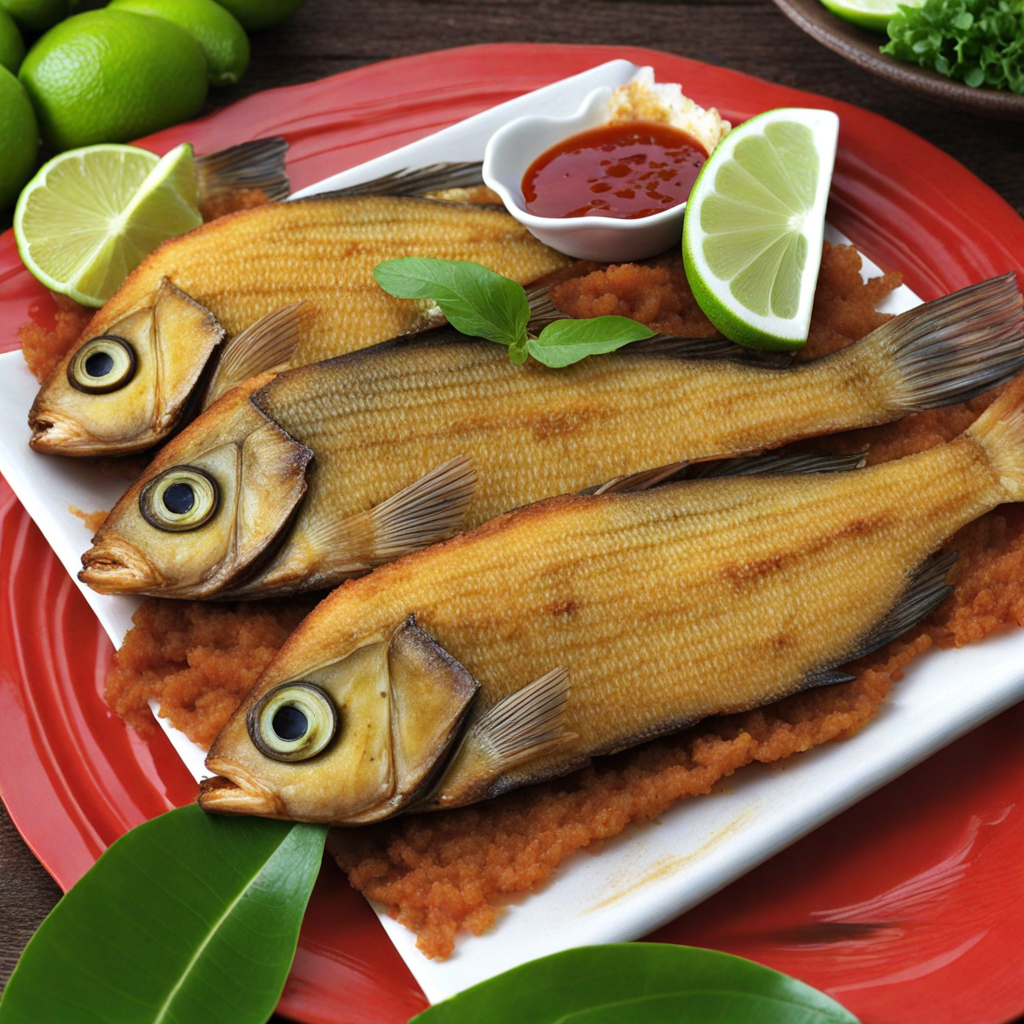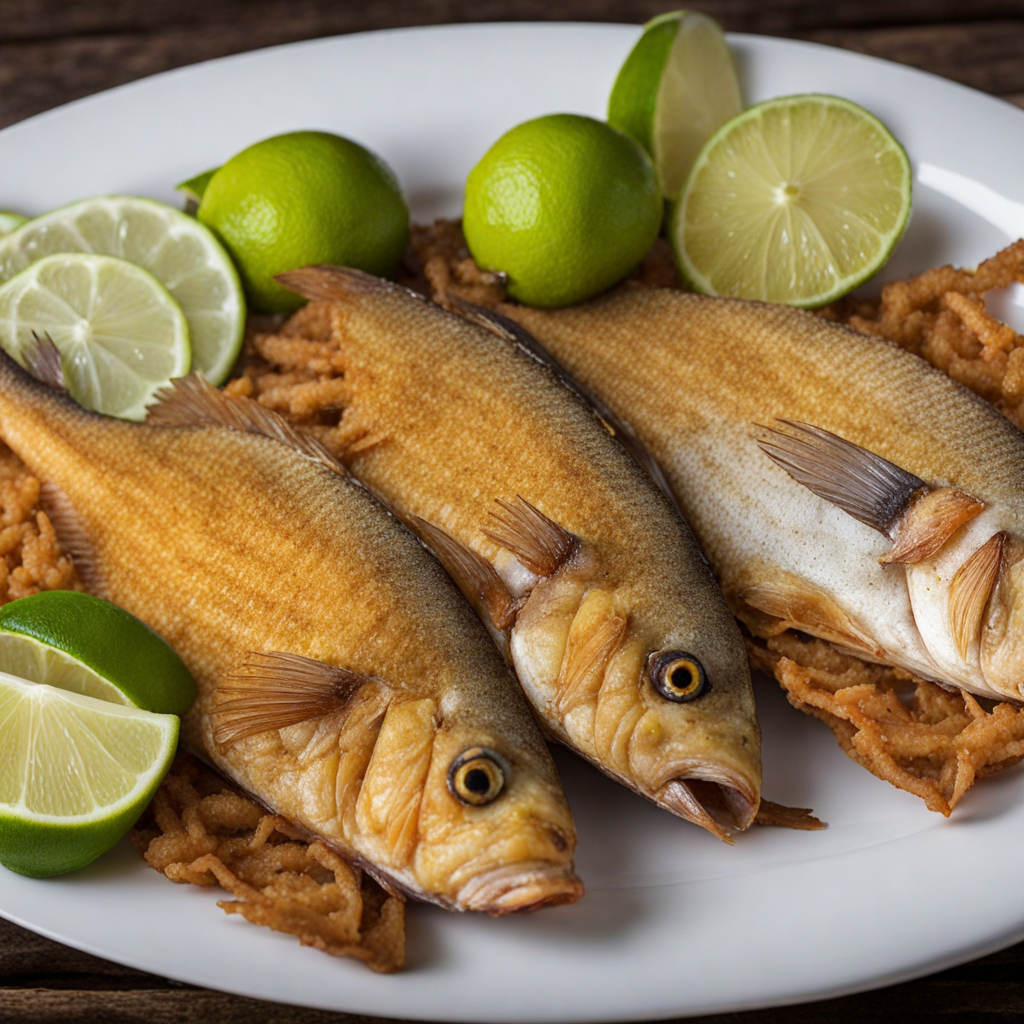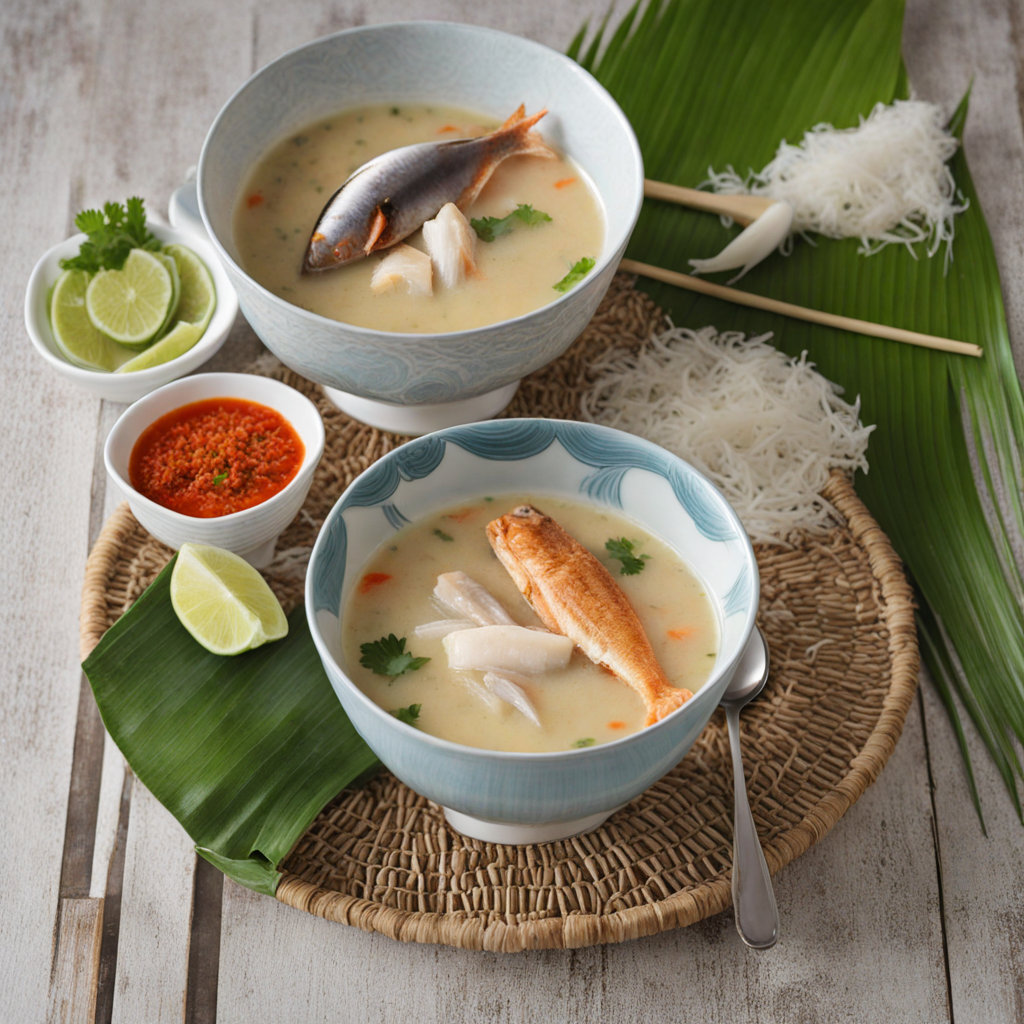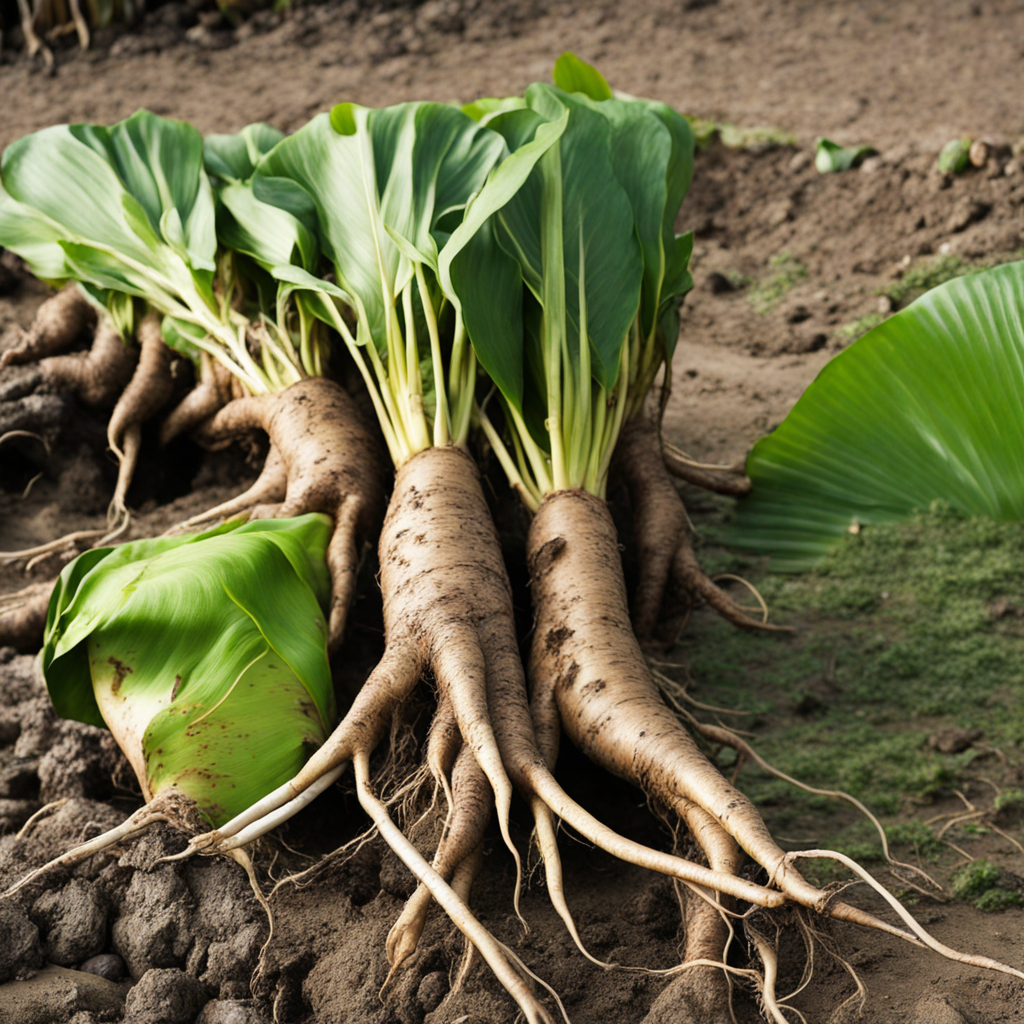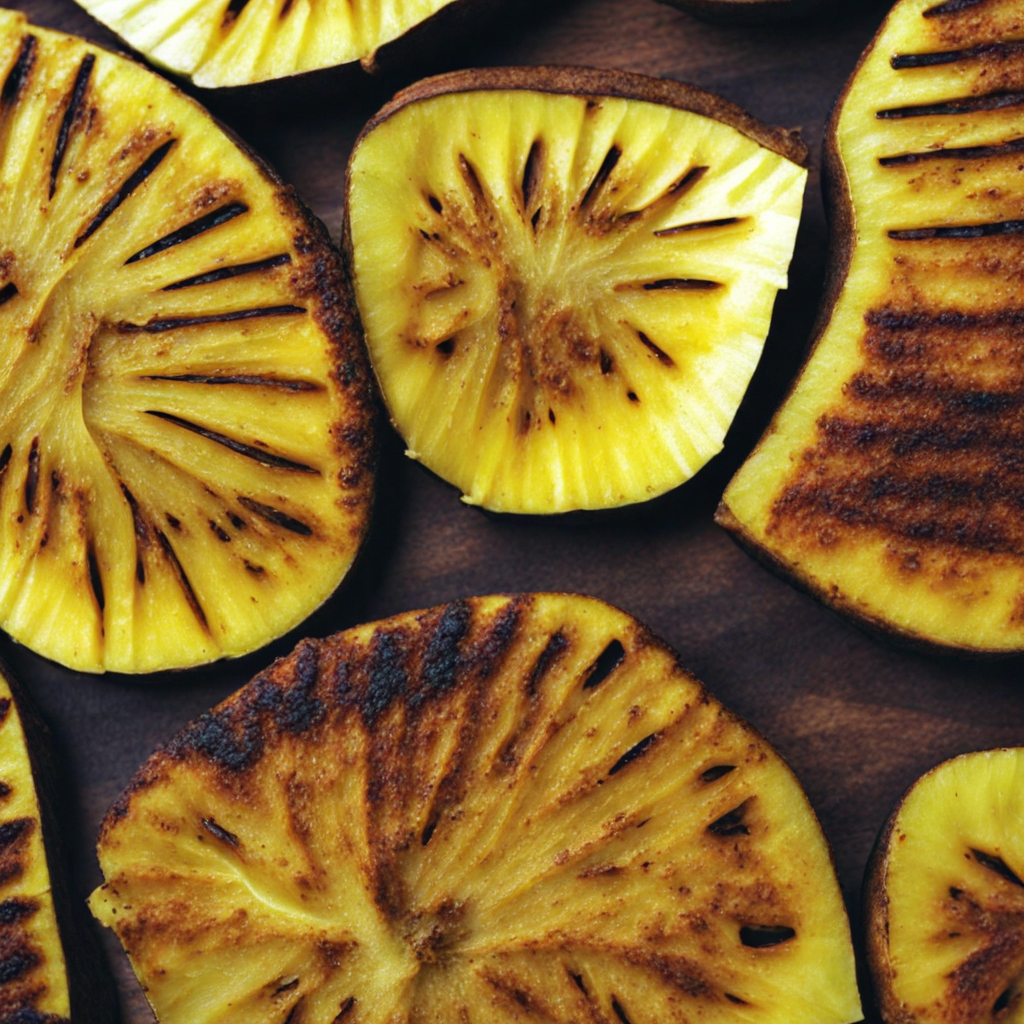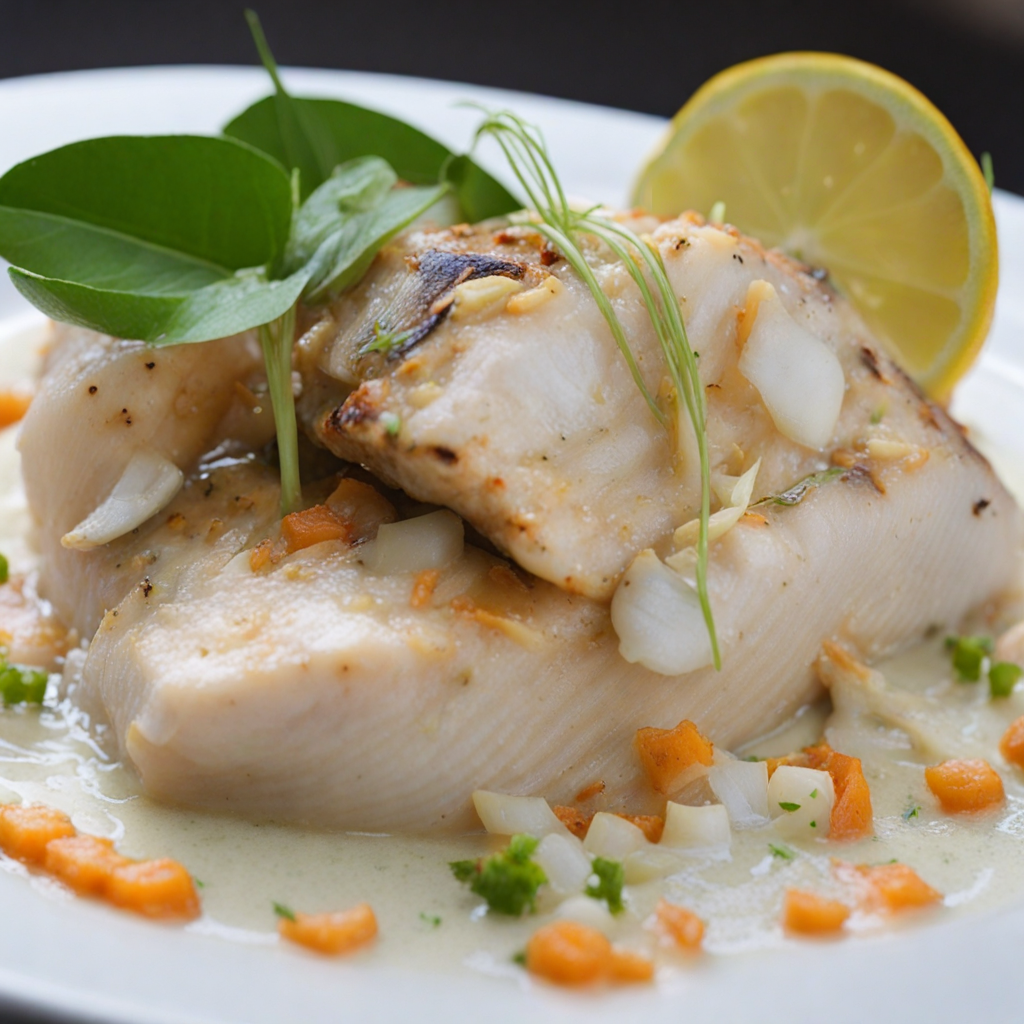Fried Fish
Fried Fish from Tuvalu is a delightful culinary experience that captures the essence of the Pacific Islands. The dish typically features freshly caught fish, often snapper or grouper, which is marinated with local ingredients such as lime juice, garlic, and a sprinkle of sea salt. This marination process not only infuses the fish with robust flavors but also tenderizes the meat, resulting in a moist and succulent bite. The fish is then coated in a light batter made from flour and cornstarch, which gives it a crispy exterior when fried. This contrast between the crunchy outer layer and the tender fish inside is what makes Fried Fish a beloved dish among locals and visitors alike. Once the fish is fried to a golden perfection, it is often served with traditional accompaniments such as fresh coconut chutney or a tangy chili sauce, enhancing the flavors and providing a kick that elevates the overall tasting experience. The vibrant colors of the dish, combined with the enticing aroma of the frying oil and spices, make it a feast for the senses. Fried Fish is often enjoyed alongside a side of steamed rice or local greens, creating a well-rounded meal that showcases the simplicity and freshness of Tuvaluan cuisine. What sets Fried Fish apart is not only its taste but also the cultural significance it holds in Tuvalu. This dish is commonly prepared during family gatherings, celebrations, and community events, symbolizing unity and the abundance of the ocean. Eating Fried Fish is more than just enjoying a meal; it is an invitation to experience the warmth and hospitality of Tuvaluan culture. The combination of fresh, locally sourced ingredients and traditional cooking methods ensures that each bite is a celebration of the islands' rich culinary heritage.
How It Became This Dish
Ika: A Culinary Gem of Tuvalu #### Origin and Definition Ika, the term used for fish in Tuvalu, is not merely a food item but a cornerstone of the nation’s cultural and culinary identity. Tuvalu, an island nation located in the Pacific Ocean, comprises nine islands, with a population that relies heavily on the ocean for sustenance and livelihood. The ocean and its bounty have shaped the islanders’ way of life for centuries, and fish—particularly ika—is integral to their diet and cultural practices. The origins of ika as a term and its significance in Tuvalu can be traced back to the country’s early Polynesian settlers. These seafaring people were adept at navigating the vast Pacific waters, bringing with them knowledge of fishing techniques and practices that would evolve over generations. The word "ika" itself is derived from the Proto-Polynesian word *ika, which broadly means “fish.” This etymological connection is a testament to the deep-rooted relationship between Pacific Islanders and the sea. #### Cultural Significance In Tuvalu, ika is much more than a source of nutrition; it is a symbol of community, tradition, and identity. Fishing is often a communal activity, fostering social bonds among islanders. Men typically venture out to sea in canoes or small boats, while women often engage in the preparation and cooking of the catch. This division of labor highlights the importance of both genders in sustaining the community and preserving its culinary heritage. Ika is celebrated in various traditional ceremonies and feasts, where it plays a central role. For example, during the "Te Aso o te Lala," a festival marking the end of the planting season and the start of the harvest, fish is prepared in various forms to honor both the land and sea. The communal sharing of ika during these events reinforces social ties and showcases the islanders’ gratitude to their environment. Moreover, the preparation and cooking of ika are imbued with cultural practices that have been passed down through generations. Methods such as drying, smoking, or fermenting fish are not only practical for preservation but also reflect the ingenuity of the Tuvaluan people in making the most of their natural resources. The traditional dish "Ika Sā," a raw fish salad marinated in coconut cream and lime, exemplifies the island’s culinary traditions and the use of local ingredients. #### Development Over Time The culinary use of ika in Tuvalu has undergone subtle transformations over time, influenced by external factors while remaining rooted in tradition. In the pre-colonial period, the islanders relied primarily on traditional fishing methods, utilizing nets and spears to catch various fish species such as tuna, parrotfish, and snapper. The fishing techniques were adapted to the specific environments of Tuvalu’s lagoons and reefs, showcasing the islanders' deep understanding of their marine ecosystem. With the arrival of European explorers and traders in the 19th century, new fishing technologies and practices began to influence Tuvaluan fishing culture. The introduction of metal fishing hooks and nets improved efficiency and yield, allowing islanders to catch larger quantities of fish. This period also saw the incorporation of new flavors and cooking methods as Western culinary influences began to permeate Tuvalu’s traditional cuisine. In the late 19th and early 20th centuries, the establishment of plantations and trade networks further transformed the fishing industry. The demand for ika grew as it became a staple not only for the local population but also for export. However, this increased commercialization also brought challenges, including overfishing and the depletion of local fish stocks. In response, the Tuvaluan government and communities began to adopt sustainable fishing practices, emphasizing the importance of preserving marine biodiversity for future generations. The modern era has seen the globalization of food, with Tuvaluan cuisine gaining wider recognition. Ika has found its way onto international menus, particularly as the world becomes more aware of Pacific Island cultures and their sustainable practices. Chefs and food enthusiasts are increasingly interested in traditional dishes like Ika Sā, which highlight the freshness of the fish and the simplicity of Tuvaluan cooking. This global interest has not only provided new opportunities for Tuvaluan fishers but has also fostered a sense of pride among islanders about their culinary heritage. #### Challenges and Future Prospects Despite its rich history and cultural significance, the future of ika in Tuvalu faces challenges. Climate change poses a significant threat to the marine environment, affecting fish populations and the livelihoods of those who depend on fishing. Rising sea temperatures, ocean acidification, and changing weather patterns can disrupt traditional fishing practices and threaten the diversity of marine life. Furthermore, the impacts of globalization and modernization have led to shifts in dietary habits among younger generations. While traditional fish dishes remain an essential part of Tuvaluan cuisine, the influence of fast food and imported goods has begun to alter eating patterns, posing risks to cultural continuity. However, there is a growing movement among Tuvaluans to reclaim their culinary heritage and promote sustainable fishing practices. Community workshops, educational initiatives, and cultural events focusing on traditional cooking methods are being organized to ensure that younger generations appreciate the importance of ika not just as food, but as a vital link to their identity and history. In conclusion, ika is more than just fish to the people of Tuvalu; it embodies their culture, history, and resilience. From its origins as a staple of the Polynesian diet to its modern-day significance, ika continues to play a pivotal role in the life of Tuvaluans. As they navigate the challenges of the future, the commitment to preserving their traditional practices and honoring the ocean will ensure that ika remains a cherished element of their culinary landscape for generations to come.
You may like
Discover local flavors from Tuvalu


